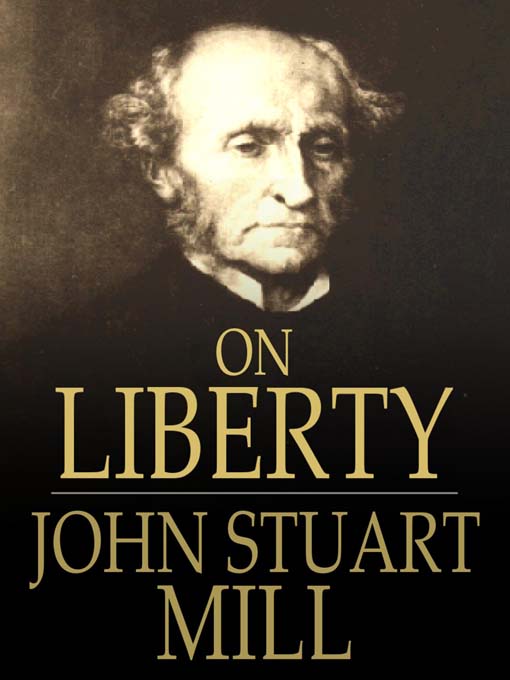(14) History of Europe
ON LIBERTY by John Stuart Mill - FULL Audio Book

Liberalism Nationalism in the early nineteenth century
Arrayed against these forces of conservatism was the gathering strength of liberalism and nationalism, both of which had their origins in the Enlightenment and the French Revolution. Actually, two separate but related currents of liberalism existed: political liberalism and economic liberalism.
Political liberalism grew out of the Enlightenment ideas of Locke, Rousseau, and others who favored government by consent and elaborated principles of popular sovereignty, constitutionalism (i.e., the powers of government limited by constitutions), and tolerance of divergent points of view.
They promoted individual rights, respect for private property, the rule of law, and stronger parliaments, although most accepted the presence of a limited monarchy.The standard-bearer of nineteenth-century liberalism was the English philosopher John Stuart Mill, who argued in his essay “On Liberty” (1859) that one person’s freedom could be restricted only if it impinged on the individual freedom of another: “The only purpose for which power can be rightfully exercised over any member of a civilized community, against his will, is to prevent harm to others.”
Economic liberalism was related to Enlightenment ideas of private property, but derived more directly from Adam Smith (The Wealth of Nations) and David Ricardo (Principles of Political Economy), who emphasized laissez-faire, the “invisible hand” of the market, and free trade. Economic liberals, like political ones, wanted to limit the power of government, but especially in terms of its regulation of the economy. They favored a dismantling of the mercantilist system, in which governments controlled almost all foreign trade; the elimination of protectionist tariffs; and the reduction of government rules and regulations that inhibited or hampered commercial and industrial activity.
Political and economic liberals had much to agree about, although differences in emphasis did exist. John Stuart Mill, for example, defended laissez-faire economics, but only if the power of entrepreneurs was balanced with rights for employees and their trade unions. Both forms of liberalism grew stronger with the rapid emergence, in the nineteenth century, of the middle class, whose members advocated increased power and influence for themselves in both political and economic spheres.
Related to liberalism and another powerful driving force in nineteenth century Europe was nationalism. The ultimate goal of nationalism is to create a unified nation-state, in which the citizens of that state identify with both the nation (the people) and with the state (the political community).
The ideal of the nation-state was relatively new in Europe and in the world generally. Before the sixteenth century, most political communities were built on family dynasties (hereditary monarchies), with little regard for popular allegiance or national culture. In that century, powerful monarchs began to centralize political control within their countries and to distance themselves from outside control by emperors or popes. This movement coincided with the Protestant Reformation, which questioned and challenged the supremacy of the Roman Catholic Church. In England, in 1534, for example, Henry VIII, in his efforts to divorce Catherine of Aragon and marry Anne Boleyn, signed the Act of Supremacy, which rejected papal authority and established the Church of England, with Henry in control. This was the beginning of the emergence of England as a nation-state and was followed by nation-state consolidation in Spain, France, and elsewhere.
The forging of centralized, unified, national states by monarchs, from the top down, is sometimes referred to as civic nationalism. Popular nationalism, the forging of states from the bottom up, is more recent still and is linked to the Enlightenment and uses the revolutionary ideas of the people as the source of power. This form of nationalism assumes that people who share a common language, culture, and identity-a nation-should be in charge of their own political destiny. It sees the people as a whole-rather than simply the elite-as the repository of culture.
This kind of populist nationalism was apparent in France during the 1789 revolution, and was symbolized by people wearing their hair naturally, snubbing the use of wigs, and wearing common working trousers instead of silk breeches. In fact, ordinary working people, the emblem of the Revolution, were referred to as the sans-culottes (without fancy pants).
The political manifestation of nationalism is the demand for autonomous political communities based on the nation; it threatened primarily, of course, the multinational and autocratic states that still controlled most of Europe in the nineteenth century. Napoleon had helped spread these ideas, even creating new national states in Poland, Holland, and parts of Italy, but the Congress of Vienna abolished most of these states. The idea of nationalism remained widespread, however, and the precedent of the nation-state was established. In the years of reaction after 1815, Italian nationalist and revolutionary Giuseppe Mazzini (1805–1872) popularized the principle of nationalism. In the 1830s, Mazzini founded a secret organization, Young Italy, committed to ridding Italy of foreign rulers and creating a unified Italian state. “Neither pope nor king,” he declared, “only God and the people.” Later, he created an international branch of his organization, Young Europe, which trained a network of conspirators across the Continent to agitate for democratic constitutions






































